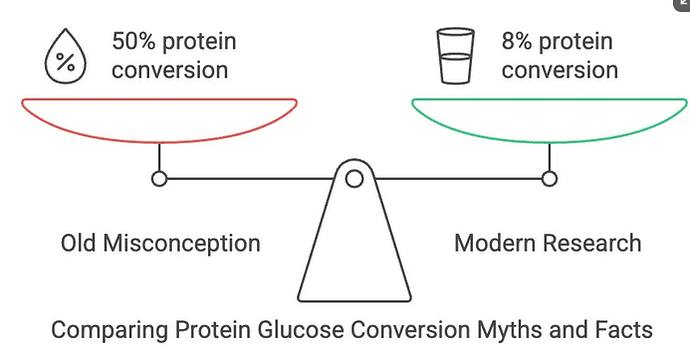The studies on which the RDA of protein is based show that the average nitrogen loss is the equivalent of 0.6 g of protein per kilogram of body mass per day. From there you could calculate an upper limit to the amount of glucose formed, based on the assumption that every single deaminated amino acid was glucogenic and nary a one was lipogenic.
However, people’s daily nitrogen needs, as plotted in the study I read, are all over the graph. The implication, then, is that some people could potentially produce more glucose , whereas others would have a much lower limit. Presumably.
However, I don’t see much point in stressing about it, however, since gluconeogenesis is a tightly-regulated process and occurs only in the absence of hyperglycaemia and hyperinsulinaemia. (It is unnecessary if there is too much glucose in the diet.) Moreover, the liver is perfectly capable of storing glucose as glycogen for the purpose of sharing with the muscles at need. (Liver glycogen can be shared, whereas glycogen formed in a muscle can be used only within that muscle.)
At any rate, we have a choice: (a) trust that 2,000,000 years of evolution have refined the mechanism; or (b) believe that EXCESS PROTEIN CONSUMED TURNS TO CAKE IN YOUR LIVER!!! 

 I know which choice I prefer.
I know which choice I prefer.


